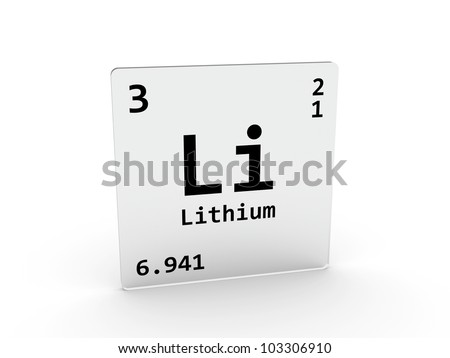Middle School
Physical Science
CH 4 - WS on Intro, organizing the elements, metals and nonmetals
1. Define:
- electron - the smallest particle of an atom, it has a negative charge
- proton - the positively charged particle in the nucleus of the atom, accounts for 1/2 the weight of most atoms.
- neutron - the un-charged particle in the nucleus of the atom, accounts for 1/2 the weight of most atoms
- nucleus - the central part of the atom composed of all the atoms neutrons and protons
- ion - An atom which is now charged positively or negatively because the # of electrons is out of balance with the # of protons
- isotope - An atom which has a different number of neutrons than it should according to its atomic number
2. Draw and label the box on the periodic table for the element Lithium. (include: atomic mass, atomic number, electrons in each energy level, atomic symbol)
- atomic mass is 6.941
- atomic number is 3
- electrons in each shell are 2 and 1
- atomic symbol is Li
3. Draw a picture of Lithium
4. Draw a picture of a (+1) ion of Lithium.
same as above but subtract one electron
5. On the periodic table, the horizontal rows are called __
periods___.
6. The vertical columns are called ____
groups_____.
7. The most highly reactive group is the ____
Alkali Metals_______.
8. The group of elements that NEVER bond are called ____
Noble Gases_____.
9. Which group would be soft like butter if found alone?
Alkali Metals
10. Which group is usually a gas?
non-metals like Oxygen and Nitrogen
11. What can you use to make a synthetic element?
a particle accelerator
12. Which group glows when electricity is run through it?
Noble Gases
13. If I start with the element Nickle and add an electron... what to I get?
An ion of Nickle
14. If I start with the element Nickle and I subtract a neutron... what do I get?
An isotope of Nickle
15. What happens to Nickle if I add a PROTON??
Nickle changes to Copper and since I didn't add a neutron o an electron... it is both an ion and an isotope.
Label the periodic table with these words: Alkaline Earth Metals, Transition Metals, Alkali Metals, Noble Gases, Non-metals, & Synthetic Elements. Use a different color for each section.
Synthetic elements have white lettering... (There is a slight difference in the transition metals. Do not worry about which PT you follow, both will be correct)






